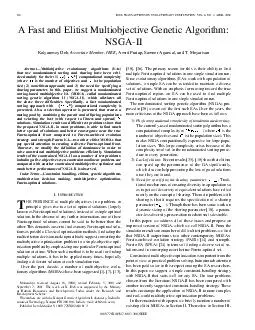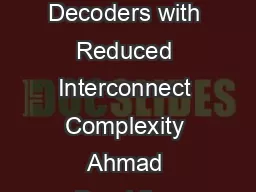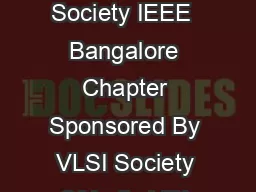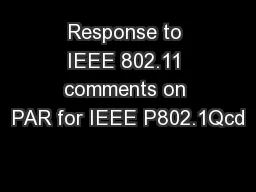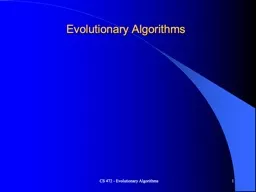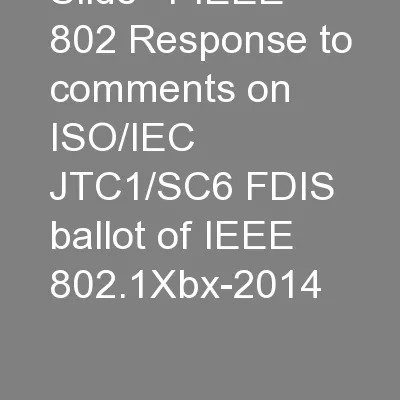PDF-IEEE TRANSACTIONS ON EVOLUTIONARY COMPUTATION VOL
Author : alexa-scheidler | Published Date : 2014-12-24
6 NO 2 APRIL 2002 A Fast and Elitist Multiobjective Genetic Algorithm NSGAII Kalyanmoy Deb Associate Member IEEE Amrit Pratap Sameer Agarwal and T Meyarivan Abstract
Presentation Embed Code
Download Presentation
Download Presentation The PPT/PDF document "IEEE TRANSACTIONS ON EVOLUTIONARY COMPUT..." is the property of its rightful owner. Permission is granted to download and print the materials on this website for personal, non-commercial use only, and to display it on your personal computer provided you do not modify the materials and that you retain all copyright notices contained in the materials. By downloading content from our website, you accept the terms of this agreement.
IEEE TRANSACTIONS ON EVOLUTIONARY COMPUTATION VOL: Transcript
Download Rules Of Document
"IEEE TRANSACTIONS ON EVOLUTIONARY COMPUTATION VOL"The content belongs to its owner. You may download and print it for personal use, without modification, and keep all copyright notices. By downloading, you agree to these terms.
Related Documents

